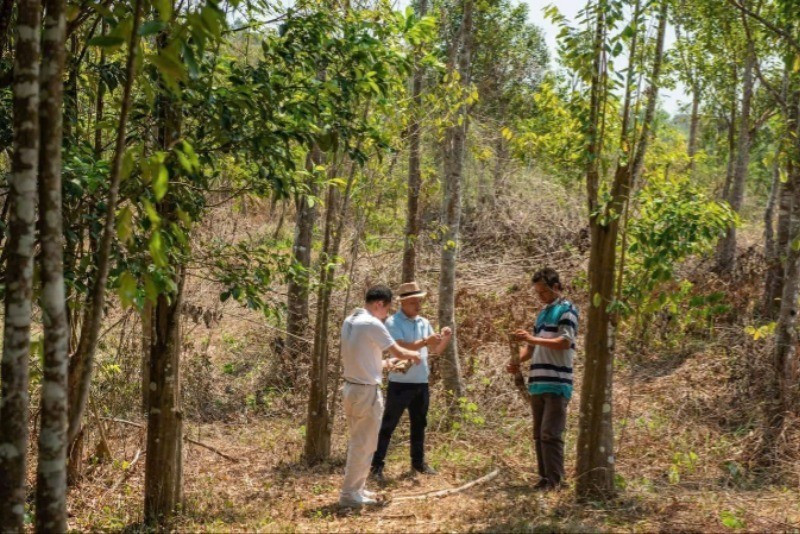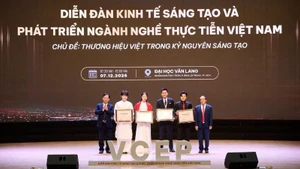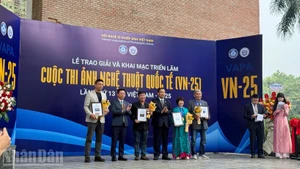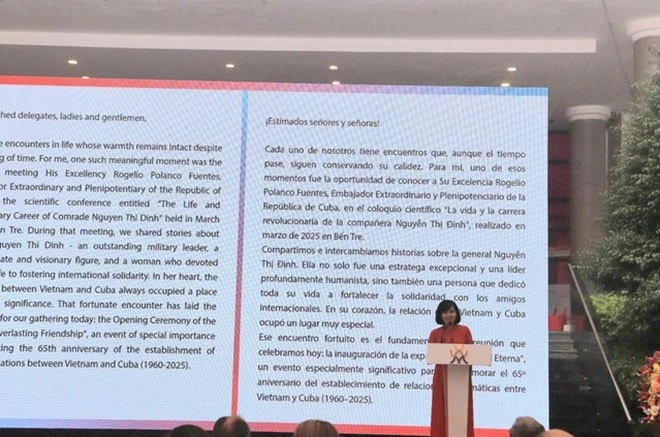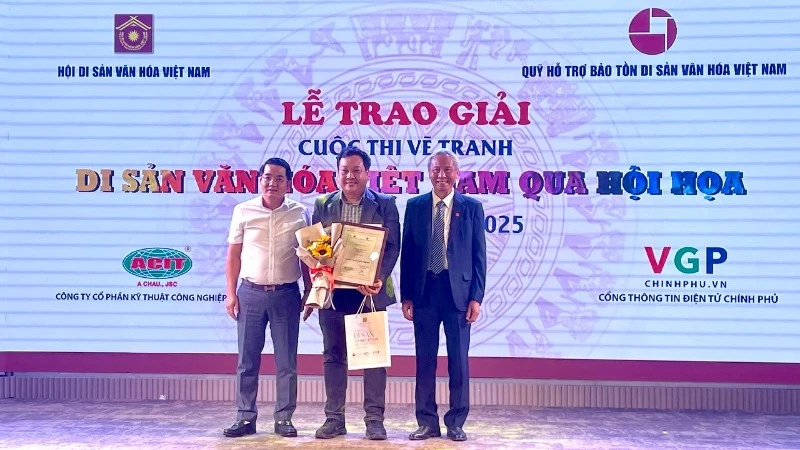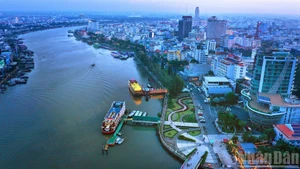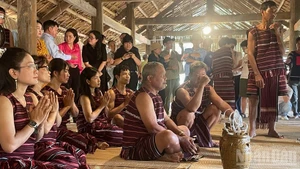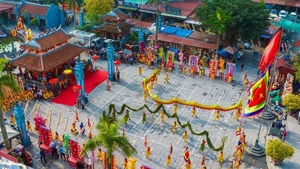According to Lingwai Daida (a book about geography, customs, economy, and society) by Zhou Qufei (1135–1189), most of the agarwood known in historical Chinese, Japanese, and Korean records was imported from Viet Nam.
Data from the Centre for International Forestry Research (CIFOR) shows that the global agarwood-related industry was valued at an estimated 32 billion USD in 2019 and is projected to reach 64 billion USD by 2029. Agarwood is commercialised in many forms, such as wood chips, essential oils, powder, incense, artistic crafts, etc., among which agarwood chips remain the most widely traded product. In Viet Nam, to protect national resources and prevent overexploitation, the government imposed a ban on harvesting and trading agarwood in the late 1990s, classifying it as a prohibited commodity.
Awakening a brand
Nguyen Van Tuong, Chairman of Khanh Hoa Agarwood Company, recalled that he was ever a correspondent of Radio the Voice of Viet Nam (VOV) in the Central Highlands. His field trips across the region provided him with his first insights into agarwood, and he wondered: Agarwood is a rare and endemic natural product, a unique and noble cultural feature of the nation with great economic value. Therefore, it must be managed and harnessed wisely rather than following the old mindset of “if it cannot be controlled, it should be banned”! That was when his destiny with agarwood truly began.
Tuong wrote a number of articles and actively lobbied the relevant authorities, including central government agencies, to organise a conference on agarwood in Khanh Hoa in 2004. The event was an unexpected success, with in-depth presentations that helped to “untie the knots” for Viet Nam’s agarwood industry.
On August 10, 2006, the government issued Decree No. 82/2006/ND-CP on the management of export, import, re-export, import from the sea, transit, breeding, raising and artificial cultivation of endangered, precious and rare wild fauna and flora; agarwood was officially permitted for import, export and trade, if it meets relevant legal regulations, especially CITES permits for export.
“I decided to leave my post at Radio the Voice of Viet Nam and move to Nha Trang. I offered incense at the Ponagar Tower and vowed to awaken the Khanh Hoa Agarwood brand,” Tuong shared.
Indeed, it was the awakening of a long-slumbering treasure. Khanh Hoa agarwood had already been a highly sought-after and favourite commodity for centuries. Historical records show that in 1606, Tokugawa Ieyasu — the founder of the Tokugawa Shogunate, which ruled Japan from 1600 to the Meiji Restoration in 1868 — sent a letter to the King of Champa stating: “We desire only the highest-grade agarwood. Please do not send any of average or substandard quality.”
Following the Incense Road, Khanh Hoa agarwood made its way to the world through major ports such as Hoi An (Viet Nam) and Hong Kong (China). Associate Professor, Doctor Tran Dinh Thien, former Director of the Viet Nam Institute of Economics, remarked: “Agarwood is one of the most globally integrated industries due to its cultural and philosophical values shared across borders.”
Agarwood is now widely used across numerous sectors: luxury perfumery; spiritual therapy and wellness; pharmaceuticals; cosmetics; handcrafted artisan products; and ceremonial and religious rituals. Demand from markets such as the Middle East, Japan, China, the US and the Republic of Korea continues to grow steadily. However, according to a market research report by the Innovation and Incubation Centre at the Foreign Trade University, Viet Nam ranks only 24th globally in agarwood exports, accounting for just 0.6% of global export turnover, far below the country’s potential and reputation.
Towards sustainable industry development
The agarwood trade is no longer reliant on risky forest expeditions or unsustainable exploitation of wild resources. Today, thousands of enterprises and households in Khanh Hoa Province are engaged in various stages of agarwood production, harvesting, processing, and trading.
Khanh Hoa agarwood is undergoing a transformation into a managed forest product. Large-scale enterprises now tend cultivated Aquilaria trees with carefully managed plantations, using both controlled natural stimulation and artificial inducement methods to generate resin. It is estimated that one hectare of forest can accommodate around 1,000 trees, and if grown using proper techniques, the product can be harvested after 10 to 12 years.
The provincial government of Khanh Hoa highly values and supports enterprises engaged in the sustainable development of the agarwood economy. The province is actively promoting the building of a national standard for agarwood, with the goal of protecting the brand, enhancing product quality, and enabling Khanh Hoa agarwood to expand its global presence.
Le Van Hoa, Deputy Director of the Department of Culture, Sports and Tourism of Khanh Hoa Province, said: “I believe these businesses will ultimately succeed because they are aligned with the cultural values of this land. We strongly encourage enterprises to take the initiative in promoting and expanding the market for Khanh Hoa agarwood. We are ready to provide legal support and assist with historical and cultural resources to help propel their development.”
According to Dr Nguyen Duy Thai from the Institute of Culture and Development under the Ho Chi Minh National Academy of Politics, the sustainable development of Viet Nam’s agarwood sector must go beyond expanding plantations or scaling up production and trade. It requires a fundamental shift in mindset. Vietnamese people must understand agarwood and its cultural significance — this is the foundation. Scientific fields related to agarwood, including technical and technological to social and human sciences, must actively participate in domestic and international academic forums to affirm the cultural strength of Viet Nam’s agarwood.
“This is also a way to enhance our ‘soft power’, to spread and promote Vietnamese cultural values to the world. Both the state and society must pay greater attention to the agarwood sector and invest more intellect and resources into developing agarwood culture. A practical and urgent task now is to register intellectual property rights and trademark protection for Vietnamese agarwood,” Dr Thai emphasised.
After this journey through the land of agarwood, I am filled with a belief: With its deep cultural significance and immense economic potential, Khanh Hoa agarwood, and Vietnamese agarwood in general, is standing at a pivotal moment to assert its place in the international market. If given the right investment, quality standardisation, and a comprehensive branding strategy, agarwood could become a national symbol, on par with French perfume, Scottish whisky, or Korean ginseng.
The future of agarwood lies not only in the export of a unique product, but also in the dissemination of a distinctive, rich Vietnamese cultural spirit to the world.
